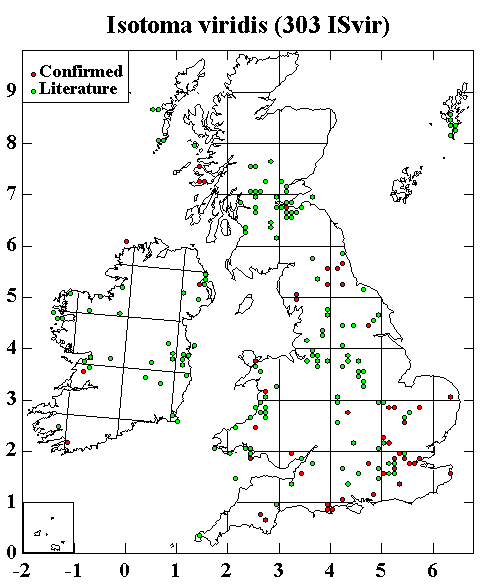|
Several varieties of Isotoma viridis have been described over the years. The literature records shown in the map on the left include all localities for Isotoma 'viridis'. At least two of these forms, Isotoma anglicana and Isotoma riparia (and probably Isotoma caerulea), are now recognised as species in their own right (see map of Isotoma anglicana for further details). Isotoma riparia only occurs in very wet habitats and has a distinctive stripe down the middle of the body. Isotoma viridis and Isotoma anglicana can only be reliably separated (in slide-mounted specimens that I have seen) by examining the manubrial 'teeth'. Isotoma viridis has a single pair of 'teeth' on the thickened apical edge of the manubrium (Fig. 1) whereas Isotoma anglicana has two pairs of manubrial teeth. Both species have three teeth on the mucro. Isotoma anglicana is more bluish-grey/brown in colour than Isotoma viridis which tends to be more greenish (Figs. 2 and 3) but this is not entirely reliable.
Many of the literature records for Isotoma viridis must refer to Isotoma anglicana which is undoubtedly widespread and common. The two species are sometimes found mixed together in the same sample.
Back to main page
|
|







